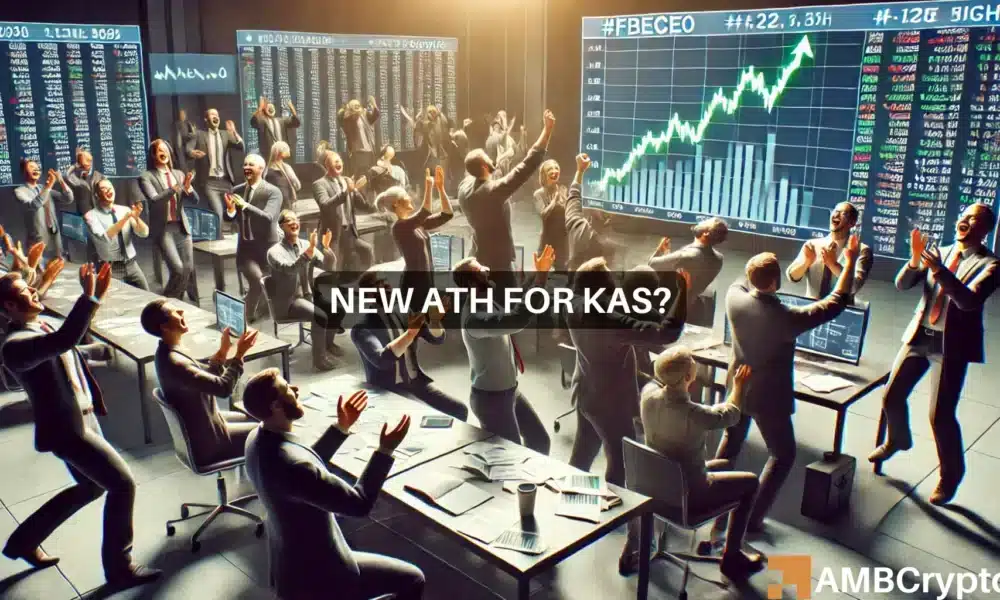Kaspa [KAS] has carved a niche for itself as one of the top-performing digital assets, witnessing a surge of 11.92% in the past 24 hours as demand from buyers intensifies.
This positive trend spans various time frames, with KAS recording gains of 6.43% over the past week and a substantial 27.15% rise over the last month.
Despite hopes for a breakthrough to set a new all-time high, conflicting sentiments in the market continue to cast a shadow over KAS’s future moves, adding an element of unpredictability.
Challenges Await KAS on its Path to Regaining Strength
KAS’s recent spike comes after breaking free from a major descending trendline pattern that had been suppressing its price rallies in five consecutive instances.
However, KAS now encounters significant resistance at the $0.1750 level, a crucial point that has repeatedly obstructed further upward progress.
If KAS manages to surpass this resistance level, it could potentially soar to a fresh all-time high, exceeding the $0.2079 mark registered at the time of the latest price check.
Conversely, if bearish sentiment dominates, there is a risk of the asset falling back into the descending trendline pattern, limiting its future advancement.
In assessing KAS’s next moves, CryptoCrypto has examined additional market metrics, yet the sentiment among market participants remains mixed.
Bulls and Bears Lock Horns in Market Battle
The current market sentiment reveals a battle between bullish and bearish forces, both actively shaping price actions.
At present, Funding Rate and Open Interest on Coinglass suggest conditions favorable for sustained upward momentum, albeit with underlying bearish hints.
The Funding Rate, which gauges the cost of keeping a balance between spot and futures markets, is currently placed at 0.0200%.
Positive Funding Rates imply that long positions (buyers) are compensating short positions (sellers) to maintain equilibrium, often indicating a bullish sentiment and the potential for higher prices.
Meanwhile, Open Interest has surged by 22.12%, reflecting a rise in active contracts.
This signifies increased market activity, with bulls holding a considerable share of these contracts, collectively valued at $124.95 million at the latest reading.
Despite the positive indicators, recent instances of long liquidations point to bearish activity, primarily on shorter timeframes.
Long liquidations occur when buyers’ stop-loss orders are triggered due to price movements against their positions, amplifying downward pressure.
Over the last 1-hour timeframe, long contracts worth $90.78K were liquidated compared to short contracts amounting to just $6.97K, accentuating the bearish trend.
Within a 24-hour span, liquidations of long positions totaled $261.61 thousand, signaling sustained bearish influence.
The long-to-short ratio currently stands at 0.9048, indicating a higher number of short contracts than long ones in the market.
This imbalance often exposes the market to corrections as the majority’s position becomes overly vulnerable.
While bullish attempts to reclaim dominance and drive prices upwards are underway, the growing impact of bearish trends hints at a possible reversal or increased volatility in the immediate future.

